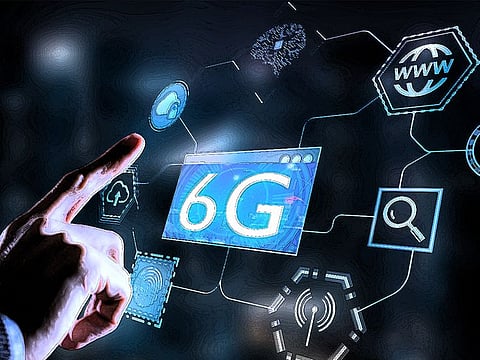How soon will world's telecom operators speed their way to 6G?
Unlike 4G, 6G user experiences will be shaped by industries and AI

As the world digitizes, every activity—both business and personal—is being redefined, and in many cases, completely reimagined due to the accelerated adoption of(A), including Generative AI. Connectivity and inter-connectivity platforms are crucial in delivering digital and AI-driven services of the future, particularly through wireless communication platforms, which offer mobility, scalability, flexibility, coverage, and cost efficiency, coupled with state-of-the-art last mile, backhaul, front-haul, and core networks.
These platforms must support significantly higher bandwidth, throughput, and lower latencies to accommodate the types of applications and use cases that are being adopted globally.
Historically, wireless technologies through 4G LTE (Long Term Evolution) had considerable architectural and business implications for both consumer and business use. However, 5G was the first technology developed with a native focus on enterprise and industrial applications, in addition to advanced consumer scenarios.
This pivotal shift required the entire supply chain—including hardware, software, devices, and ecosystems—to evolve in tandem to fully leverage its capabilities and encourage broader adoption, particularly in enterprise and industrial sectors.
What is truly exciting is that the extensive industry efforts invested in 5G are setting the stage for the introduction of 6G. This next generation will feature an AI-native architecture and enhanced capabilities.
Telecom operators, regulators, ministries of communication, vendors, and the entire ecosystem must strategically plan their roadmaps, taking these realities and the future into consideration.
A reflection of mobile communication evolution The evolution of mobile communications began with the introduction of Nordic Mobile Telephony (NMT) networks, or 1G, in the early 1980s.
During the 1990s, the launch of GSM (2G) networks enabled the use of smaller mobile handsets, and the introduction of mobile internet capabilities marked the era of 3G. The consumer segment primarily catalyzed the adoption of 4G and LTE, as individuals experienced significant improvements in internet speeds and latency.
This was further supported by the introduction of affordable smartphones. The incremental benefits of 5G and 5.5G (5G-Advanced) are now more relevant for enterprises, prompting telecom operators to focus on 5G-based enterprise use cases to monetize their network investments and improve Return on Investment (RoI).
Roadmap to 6G standards
The International Telecommunication Union (ITU) held the World Radio Communication Conference (WRC-23) in Dubai in late 2023.
This conference, where radio regulations and spectrum policies are reviewed and revised every three to four years, saw the participation of the global community. In December 2023, the ITU published a framework for the sixth generation of radio interface technologies (6G), aiming for approval by the end of the decade. T he ITU Recommendation (ITU-R M. 2160) outlines a framework and overall objectives for the development of the terrestrial component of International Mobile Telecommunications (IMT) for 2030 and beyond (IMT-2030). This recommendation marks a critical step toward developing globally accepted 6G standards, continuing the legacy of ITU’s standardization efforts from 1G analogue cellular through 5G IMT-2020.
Envisioning 6G technology
Research suggests that 6G will substantially surpass 5G in terms of peak data rates, with projected peak data rates like 50-, 100-, or even 200 Gbps. The minimum user-experienced data rates (speed) are expected to be around 300 Mbps and 500 Mbps, while the connection density could reach between 106 and 108 devices per square kilometer.
Significantly, the target latency over the air interface is projected to be between 0.1 to 1 millisecond, a critical factor for enabling potential 6G use cases.
These advancements in network capabilities are anticipated to support diverse 6G use cases, including:
Companies and sector associations are expected to submit their IMT-2030 proposals to the ITU by early 2027. The ITU’s expert working group on IMT systems (ITU-R Working Party 5D) will evaluate these submissions with the aim of finalizing the 6G technology standards by 2030.
As the AI landscape continues to mature, we are moving towards an immersive future where rapid connectivity with minimal latency and maximum throughput is essential. 6G is set to be the foundational connectivity infrastructure supporting this technological revolution.
The Gulf region, a pioneer in 5G adoption and digital transformation, will likely play a critical role. Collaborative efforts among policymakers, regulators, telecom operators, vendors, cloud providers, and all ecosystem players will be crucial for a successful transition to 6G, contributing to the economic and social development of the region.
As we stand on the brink of the 6G horizon, we are not just looking at incremental improvements but a transformative leap that will redefine how we interact with technology and each other. The path we lay today with 6G standards and policies will pave the way for a future where technology serves as a seamless extension of human intent and capability."
Sign up for the Daily Briefing
Get the latest news and updates straight to your inbox




